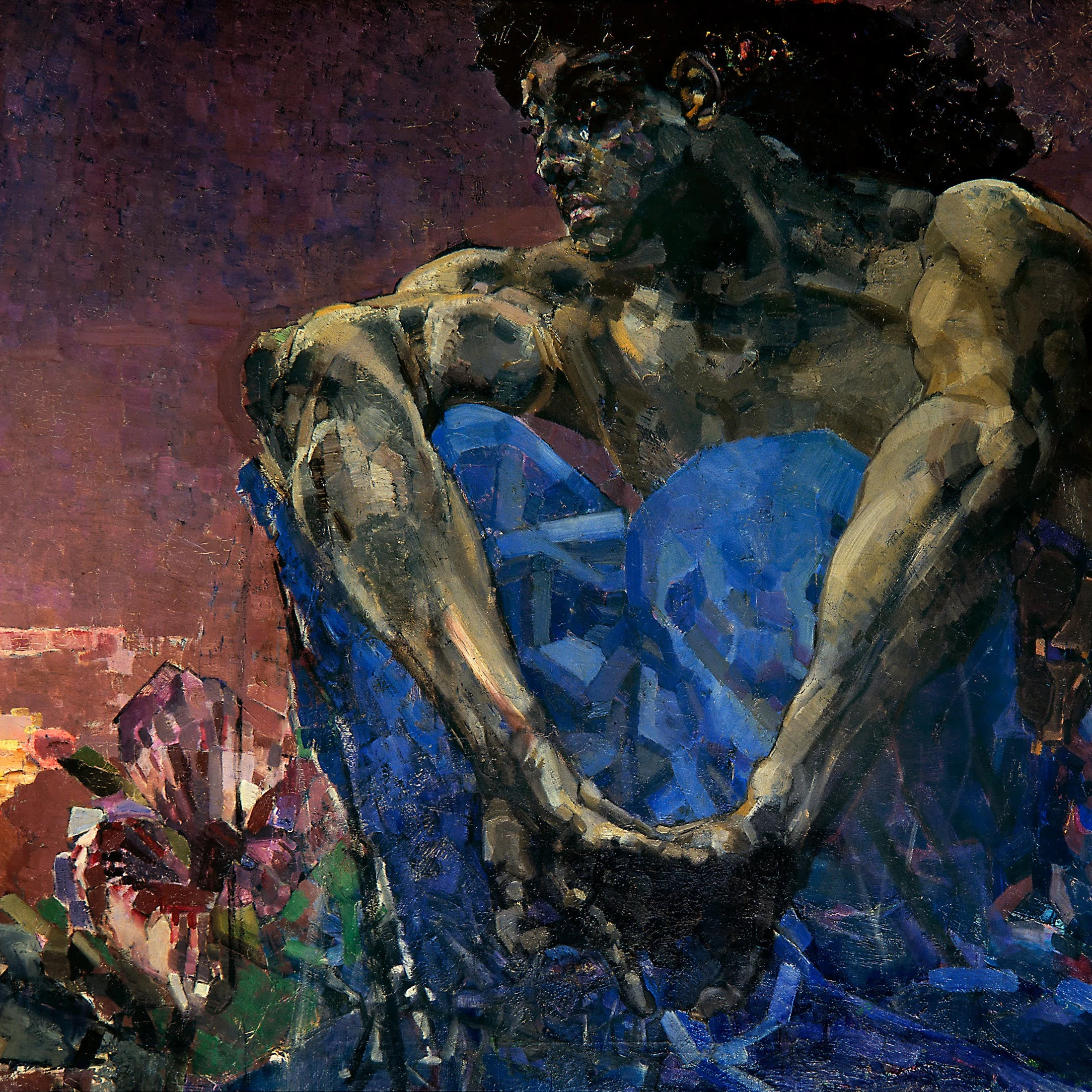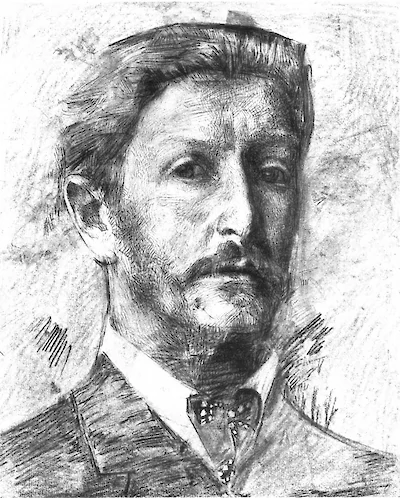Mikhail Vrubel
The man who fell in love with a demon




Mikhail Vrubel first painted his demon while illustrating a romantic poem by Mikhail Lermontov. Vrubel described him as “a spirit, not so much evil as suffering and sorrowing, but in all that a powerful spirit… a majestic spirit.” But that was only its first incarnation. The dark-eyed demon followed Vrubel his whole life, appearing in his work hunched against a dark sky, conversing with the beautiful Tamara, and finally contorted in agonizing defeat.
At age 24 Mikhail Vrubel graduated with a degree in law, but he did't become a lawyer. He turned to painting. Vrubel studied at the Imperial Academy of arts under Pavel Chistyakov, and developed an odd, fragmented style—brushstrokes like pebbles on a beach. One of his first large commissions, a suite of murals for St. Cyril’s Church in Kiev, sent him to Venice, where he studied Early Christian art. The somber, doe-eyed saints of the Coptic icons soaked into him, and reappeared, darker, on his return to Russia.
In 1890, Mikhail Vrubel moved to Moscow, where he developed a broad range of artistic work. Like many Art Nouveau artists, he worked in many mediums, including stained glass, majolica, and costume design. But the demon brought him into the limelight. Though he’d sketched illustrations for Lermontov’s poem in Kiev, Demon Seated was the first time Vrubel brought the form to life on a massive canvas.
Vrubel’s demon was met with shock by the Moscow art world. Some critics called it ‘wildly ugly,’ others a ‘symphony of genius.’ The controversy brought success, as it so often does. Vrubel caught the eye of art patron Savva Mamontov, who commissioned works for his private opera. Through the opera Vrubel met the dancer Nadezhda Zabela, who he created costumes for, painted in operatic fantasy, and eventually married. For the next ten years, Vrubel painted mythological figures, created majolica friezes, even dabbled in architecture, but always returned to the demon. In 1902 Vrubel’s massive painting The Fallen Demon depicted the demon defiant, though twisted in defeat. It’s a massive, detailed canvas, and Vrubel’s work on it spiraled into obsession. He painted and repainted the demon’s eyes and lips compulsively, even once the work was on display, finally succumbing to a catastrophic mental and physical breakdown. Vrubel was committed to a mental hospital, where he spent the rest of his life.
Vrubel’s demon ruined him, but his work lives on as a dark inspiration. The Russian poet Alexander Blok described it best, writing, “Vrubel’s Demon is a symbol of our times, neither night nor day, neither dark nor light... Vrubel came to us as a messenger to tell us that the violet night is sprinkled with the gold of a clear evening. He left us his Demons to exorcise the violet evil and the night. What Vrubel and those like him reveal to mankind once a century, make me tremble with awe.”
...
Got questions, comments or corrections about Mikhail Vrubel? Join the conversation in our Discord, and if you enjoy content like this, consider becoming a member for exclusive essays, downloadables, and discounts in the Obelisk Store.